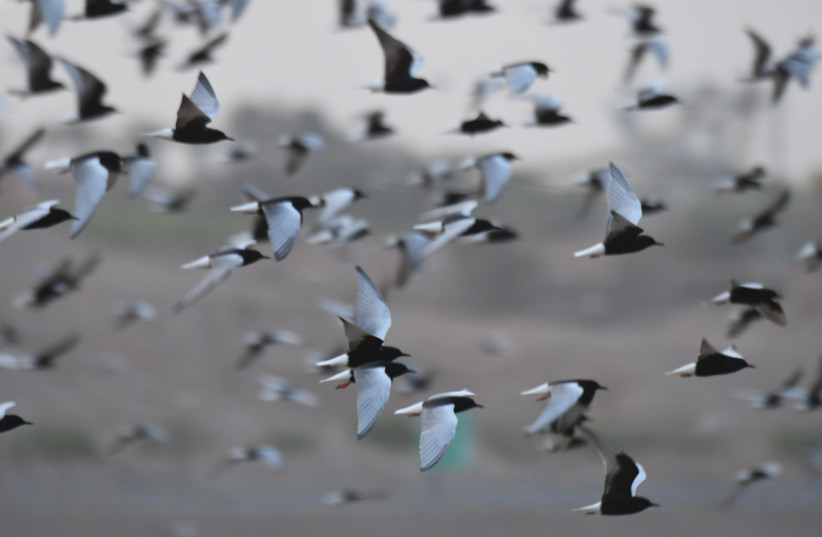The feathered guests come to Eilat every year as an important stop on their migration patterns, but their numbers are in sharp decline in recent years.
By AARON REICH APRIL 19, 2021

Israel is seeing a huge influx of new feathered guests flying into the country, as huge flocks of birds returned to Eilat for annual migration patterns.
The birds, which come from a wide variety of different species, come once a year to the shores of Eilat, Israel’s southernmost point, around April 20. The annual stopover is an important part of bird migratory cycle, where they fly from their winter homes in Africa to their breeding grounds in Northern Europe and parts of Asia. According to Noam Weiss, director of the International Birding & Research Center, Eilat (IBRCE), this is for two reasons. The first is that the area is a bottleneck – a land bridge connecting Europe, Asia and Africa, and most migrating birds don’t like flying over the sea, so they use this passage in their migration north.
The second, and more crucially, is that this is what lies south of Eilat: The Sahara desert, 30,000 meters of barren desert these birds need to cross.”Most of these birds are forest birds so they’re not up to finding food in the desert. Eilat is the first green spot after crossing the desert,” Weiss told The Jerusalem Post. “
This is why Eilat is such a crucial site: It’s a restaurant after 30,000 meters without food.”But despite being such an important stop, the numbers arriving in Eilat every year are declining.Exact statistics are unavailable, as the data is being compiled by the IBRCE in an upcoming study in cooperation with several other universities and institutions. But overall, the number of birds arriving in Eilat each year has been sharply declining over the last eight years.
A number of factors may be at play, but overall the numbers dropping the most are the long-range migratory birds.According to Weiss, research has also shown that the numbers declined both at the northern breeding grounds and the winter homes in Africa. It is unclear exactly what is behind this, but Weiss is confident in one thing: Eilat isn’t the problem.”To make sure the problem isn’t here, we compared the number of sedentary birds – who don’t migrate – and short-ranged migrant birds with the long-ranged migrants,” he explained. “Those populations are all stable. Only the long-range migrants are declining.
“A large number of specific species may be at risk now, with the willow warbler and red-backed strike identified by the IBRCE as two species showing significant decline.This decline raises alarms for experts, as long-range migrant birds play important ecological role.
These birds are important for the environment, they provide ecological services like pollination, pest control, moving seeds and other things that forests need,” Weiss explained. “It’s a sad story – not just because of the birds, but because nature and life are getting weaker and more difficult to sustain. The system that runs the world is still nature. If we can identify a problem, we need to do something about it.”
Birds Migrating Over Israel Are Changing Their Timing, and Other Climate Change Briefs – Haaretz
Ruth Schuster Apr. 6, 2021

When birds of a feather don’t migrate together
Israel is on the route for birds migrating between Europe and Africa. That explains why the Holy Land attracts not only pilgrims but birdwatchers. But, to generalize, the rapid pace of global warming is confusing the birds, Israeli scientists warn in Science Advances.
The redstart, for instance, lives in Africa and Arabia but breeds in Europe. The males are flying out earlier but the female isn’t, based on data collated in Israel; other studies haven’t found that correlation and suggest the ladies are adjusting migration speed en route. But sexual differences in changes to migration timing have also been shown in the willow warbler in Sweden.
Or take the blackcap, whose trigger for migration involves vegetation, which is being affected by climate change. Point being, as climate change advances, some, or many, birds may not be able to adjust their migration timing appropriately, which endangers their survival, irrespective of other warming-related problems like extreme weather.

